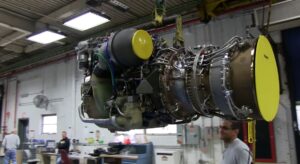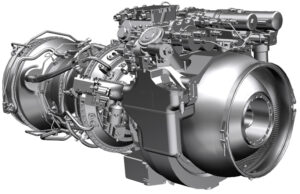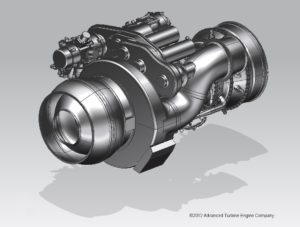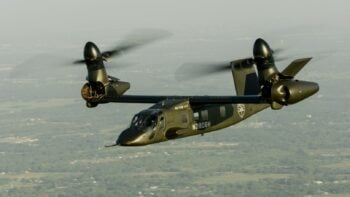After more than seven years of designing and testing how to make new, more powerful, and incredibly fuel efficient engines for its AH-64 Apache attack helicopters and UH-60 Black Hawk utility birds, the Army has issued a Request for Proposals (RFP). The Army’s “top aviation priority” thus takes a baby step closer to becoming a reality – and will take roughly another decade to get into service, assuming it ever does.
“Obviously we don’t need this motor very badly,” cracked one former Army general whose aviation career spanned three decades and included 1,500 combat hours in helicopters. “If we did, we’d go out and buy a solution and it wouldn’t take a decade to bring it into the force.”
The Improved Turbine Engine Program (ITEP, pronounced “EYE-tepp”), unofficially pits GE Aviation, which produces the T700 engines the Black Hawk and Apache currently use, against the Advanced Turbine Engine Co. (ATEC), a 50-50 joint venture formed by Pratt & Whitney and Honeywell. The goal is to build an engine that can plug-and-play — no major airframe modifications necessary — and supply 3,000 shaft horsepower instead of the T700’s maximum 2,000. That’s a huge increase. The ITEP is also required to offer a 65 percent improvement in power-to-weight ratio, 20 percent longer engine life, 25 percent better specific fuel consumption and 20 to 25 percent lower production and maintenance costs.
“This is a challenging technological effort for these guys,” Project Manager Rich Kretzschmar told reporters on a conference call Monday, defending what critics describe as a schedule that makes the ITEP a poster child for the snail’s pace of defense acquisition.
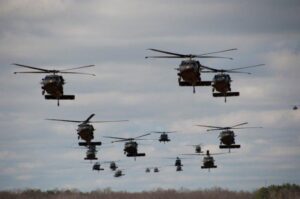 “This wasn’t designed just for Afghanistan,” Kretzschmar added when it was pointed out that America’s longest war – now nominally over for the U.S. military – was a major impetus for the project. “That was certainly what identified the capability gap,” Kretzschmar conceded. But the increased capability the ITEP is to give Apaches and Black Hawks, he said, “are applicable in many different places in the world.”
“This wasn’t designed just for Afghanistan,” Kretzschmar added when it was pointed out that America’s longest war – now nominally over for the U.S. military – was a major impetus for the project. “That was certainly what identified the capability gap,” Kretzschmar conceded. But the increased capability the ITEP is to give Apaches and Black Hawks, he said, “are applicable in many different places in the world.”
Lt. Col. Curt Kuetemeyer, product manager for ITEP, disagreed with the suggestion the program could be moving faster. Seeing “what the state of technology was currently and whether the (engine makers) could in fact design a turbine engine that would, in that size and volume or weight and volume constraint … allow us to get to the shaft horsepower that we felt we like we needed” ate up a lot of time, Kuetemeyer said. “I think you could almost call the Advanced Affordable Turbine Engine program the poster child for how to do a technology program.”
Mike Hirschberg, executive director of the American Helicopter Society International, said the “engine testing done under the AATE program demonstrated the incredible potential for developing a next generation engine and has convinced the Army that these leap-ahead improvements really are attainable.” But Hirschberg added that, “Army investments in rotorcraft science and technology have been well below what should have been warranted based on their outsized contributions to military operations. This program could have been seriously accelerated if the Army had been funding it better.”
The former general, meanwhile, reasoned that GE, at least, has no incentive to push the Army to move faster because the ITEP “is going to displace the GE 700 series engines and we’re in a multiyear contract right now with Black Hawks and Apaches. GE is not in any hurry to have a replacement engine that potentially displaces them. If ATEC were to win this contract, GE would lose their market.”
Harry Nahatis, GE Aviation’s general manager of advanced turboshaft engines, said his company “is ready to move at any pace the Army requires and funding allows.”
ATEC spokesman Nathan Drevna, likewise, said the Pratt & Whitney/Honeywell joint venture “is ready to meet our customers’ needs on the schedule that is best for them.”
Neither Kretzschmar nor Kuetemeyer explained why the companies are now being given another two years to design their engines before the Army starts the next phase of the program, Engineering and Manufacturing Development.
“Proposals are due on the 9th of November,” Kuetemeyer said. “The period of performance is 24 months and the Army will award to up to two qualified vendors.”
Gee, wonder which two?
Army wraps up FLRAA PDR, incorporating special ops design changes
According to a SOCOM official, the Army included feedback from the command that led to design changes like hardware for a refueling probe and features that will enable special operators to make unique modifications.
















